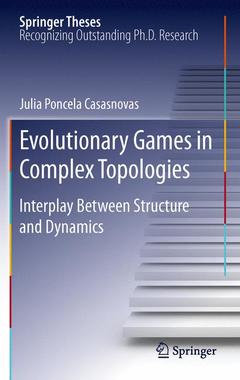Description
Evolutionary Games in Complex Topologies, 2012
Interplay Between Structure and Dynamics
Springer Theses Series
Author: Poncela Casasnovas Julia
Language: English
Subject for Evolutionary Games in Complex Topologies:
Approximative price 105.49 €
In Print (Delivery period: 15 days).
Add to cartPublication date: 06-2014
158 p. · 15.5x23.5 cm · Paperback
Approximative price 105.49 €
In Print (Delivery period: 15 days).
Add to cartPublication date: 05-2012
158 p. · 15.5x23.5 cm · Paperback
Description
/li>Contents
/li>Comment
/li>
The thesis explores the interface between the underlying structure of a given population and the outcome of the cooperative dynamics taking place on top of it, (namely, the Prisoner's Dilemma Game). The first part of this work analyzes the case of a static system, where the pattern of connections is fixed, so it does not evolve over time. The second part develops two models for growing topologies, where the growth and the dynamics are entangled.
Gives important insights into the emergence and evolution of cooperation
Interdisciplinary topic of interest to physicists, mathematicians and life scientists
Nominated as an outstanding contribution by the University of Zaragoza
Includes supplementary material: sn.pub/extras




